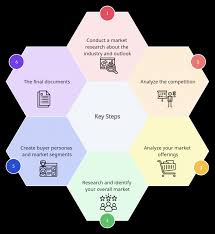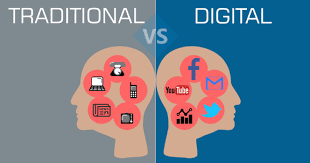Mastering Target Group Analysis in Digital Marketing: Key Strategies for Success
The Importance of Target Group Analysis in Digital Marketing
In the fast-paced world of digital marketing, understanding your target audience is crucial for success. Target group analysis involves identifying and segmenting the specific demographic, psychographic, and behavioural characteristics of the audience you want to reach with your marketing efforts.
By conducting a thorough target group analysis, digital marketers can tailor their strategies to resonate with their ideal customers, leading to more effective campaigns and higher conversion rates.
Benefits of Target Group Analysis
Precise Targeting: By defining your target group accurately, you can focus your resources on reaching the right people who are most likely to be interested in your products or services.
Personalised Messaging: Understanding the preferences and behaviours of your target audience allows you to create personalised and relevant content that resonates with them on a deeper level.
Improved ROI: Targeted marketing campaigns result in higher engagement rates and better return on investment as you are reaching out to individuals who are more likely to convert into customers.
How to Conduct Target Group Analysis
To perform a successful target group analysis in digital marketing, consider the following steps:
- Define Your Goals: Clearly outline what you want to achieve with your digital marketing efforts and identify the key metrics for success.
- Gather Data: Utilise tools such as Google Analytics, social media insights, customer surveys, and market research to collect relevant data about your target audience.
- Create Buyer Personas: Develop detailed profiles of your ideal customers based on demographic information, interests, online behaviour, and purchasing habits.
- Analyse Competitors: Study how your competitors are targeting similar audiences and identify gaps or opportunities for differentiation.
- Refine Your Strategy: Use the insights gained from the analysis to refine your digital marketing strategy by creating tailored content, selecting appropriate channels, and setting specific targeting parameters.
In Conclusion
A comprehensive target group analysis is essential for maximising the impact of your digital marketing efforts. By understanding who your audience is and what motivates them, you can create compelling campaigns that drive engagement, increase brand loyalty, and ultimately drive business growth in today’s competitive online landscape.
Decoding Your Audience: Key Insights into Target Group Analysis for Digital Marketing Success
- What is target group analysis in digital marketing?
- Why is target group analysis important in digital marketing?
- How do you identify the target audience for digital marketing campaigns?
- What are the benefits of conducting a target group analysis?
- What tools and methods can be used for target group analysis in digital marketing?
What is target group analysis in digital marketing?
Target group analysis in digital marketing refers to the process of identifying and understanding the specific characteristics, preferences, and behaviours of the audience that a business aims to reach with its online marketing efforts. By conducting a target group analysis, marketers can create more targeted and personalised campaigns that resonate with their ideal customers. This strategic approach allows businesses to maximise the effectiveness of their digital marketing initiatives by focusing on engaging with the right audience segments and delivering relevant messages that drive conversions and build long-term relationships with customers.
Why is target group analysis important in digital marketing?
Understanding the importance of target group analysis in digital marketing is crucial for businesses looking to maximise the effectiveness of their campaigns. By conducting a thorough analysis of their target audience, businesses can identify specific demographics, behaviours, and preferences that allow them to tailor their marketing efforts for better engagement and conversion rates. Target group analysis helps businesses to reach the right people with the right message at the right time, leading to improved ROI and long-term success in the competitive digital landscape. Ultimately, by honing in on their target group through analysis, businesses can create more personalised and relevant marketing strategies that resonate with their audience and drive meaningful results.
How do you identify the target audience for digital marketing campaigns?
In digital marketing, identifying the target audience for campaigns is a critical step towards achieving success. To pinpoint the right audience, marketers typically start by conducting thorough research to understand the demographics, interests, behaviours, and preferences of potential customers. Utilising tools such as analytics platforms, social media insights, customer surveys, and market research can provide valuable data to create detailed buyer personas. By analysing this information and gaining insights into who your ideal customers are, you can tailor your digital marketing campaigns with precision to effectively reach and engage with the target audience most likely to convert into loyal customers.
What are the benefits of conducting a target group analysis?
Conducting a target group analysis in digital marketing offers a multitude of benefits. By delving into the characteristics and preferences of your target audience, you can achieve more precise targeting, ensuring that your marketing efforts reach those most likely to convert. This leads to improved engagement rates and a higher return on investment. Furthermore, through a thorough analysis, you can create personalised messaging that resonates with your audience on a deeper level, fostering stronger connections and brand loyalty. Ultimately, conducting a target group analysis empowers marketers to tailor their strategies effectively, resulting in more impactful campaigns and increased success in the dynamic digital landscape.
What tools and methods can be used for target group analysis in digital marketing?
When it comes to conducting target group analysis in digital marketing, there are various tools and methods available to help marketers gain valuable insights into their target audience. Tools such as Google Analytics, social media analytics platforms, customer relationship management (CRM) systems, and market research surveys can provide essential data on demographics, online behaviour, interests, and preferences of the target group. Additionally, methods like creating buyer personas, conducting A/B testing, analysing competitor strategies, and utilising data segmentation techniques are effective ways to refine targeting strategies and personalise marketing campaigns for better engagement and conversion rates. By leveraging these tools and methods effectively, digital marketers can enhance their understanding of the target audience and tailor their marketing efforts to drive impactful results in today’s competitive digital landscape.




